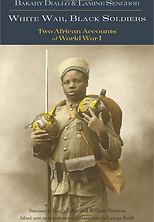
Teaching with Curiosity, Creativity, and Compassion
Next Semester in World History Video
As my students completed an end-of-semester video project in which they featured scenes from the fall semester, I entertained them with this light-hearted video previewing upcoming second-semester topics in the style of an old newsreel.
To hear sound, click on the sound icon in the lower righthand side of the video.

The Mexican Revolution via Corridos and Murals
In this culturally relevant lesson, I integrated two art forms associated with the Mexican Revolution: "Corridos" or narrative songs about heroes, villains, and tragic figures, and Mexican Muralism.
First, I gave them the lyrics to several corridos about leaders during the revolution. I had them use these lyrics as sources to create their own timeline of the revolution based on the narratives.
Then, after a lecture on the revolution, I showed had them explore some local murals and then draw their own miniature mural depicting the events of the Mexican Revolution.


Create Your Own 28th Ammendment
This activity invites students to create their own 28th amendment to the Constitution while answering the essential question "Which rights are most important to you?" I provided sentence frames and sample images of original documents. To encourage creativity and fun, I provided parchment paper and encouraged them add design elements to their documents.
WWI Primary Source: Bakary Dialo
Connecting WWI to Industrialization and Imperialism.
I always look to make connections between our units, so that students understand the causes, effects, and trends of history. In this primary source analysis activity, we read the account of Bakary Dialo, a senegalese soldier who fought for France during World War I.
In his account, students identify how imperialism affected World War I (African soldiers fighting in a European war) and how industrialization made war more deadly (descriptions of tanks and artillery).

Introducing myself to students through primary and secondary souces
Rather than introduce myself with a boring "about me" slide, I let the students investigate primary and secondary sources about my life...my childhood hockey card, a photo from my wedding, my college degree, and more. Students identify sources as primary or secondary, make inferences from their source, and assess the reliability of the sources provided...that's right, not all of the sources can be trusted!
Project Based Learning (PBL):
Collaborative Cookbook
In this group project, we created an interdisciplinary project-based learning (PBL) unit centered around food. As my group's social science representative, I contributed a portion connecting food sustainability to geography and a "Socratic Meal" activity. Students would bring foods from different cultures and then have a socratic seminar about an article about colonialism's historical impact on food world wide.
Communities of Practice Video Project
I believe humor is an underrated part of learning, teaching, and communication in general. Too often we think of humor as separate from academic and professional life. In reality, many of the best communicators utilize humor to engage their audience. On-topic humor is something we should use as teachers and encourage from our students. This video presents the educational theories of Ettienne Wenger's Communities of Practice ini the form of an infomercial.


World History Syllabus
This sample syllabus utilizes modern, research-based policies and practices presented in a custom visually pleasing , student-friendly design.
Word Wanted Poster
I would put up posters like these that visually and verbally describe important disciplinary vocabulary words.
